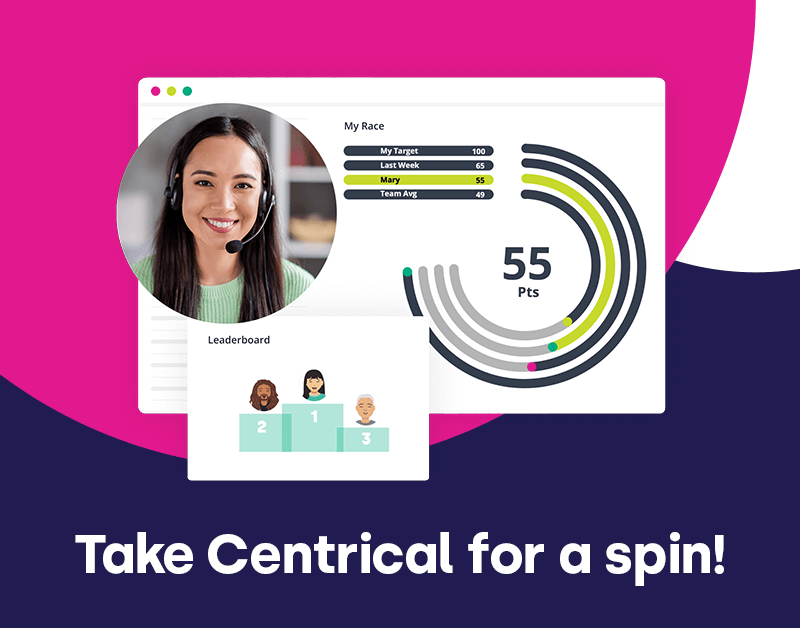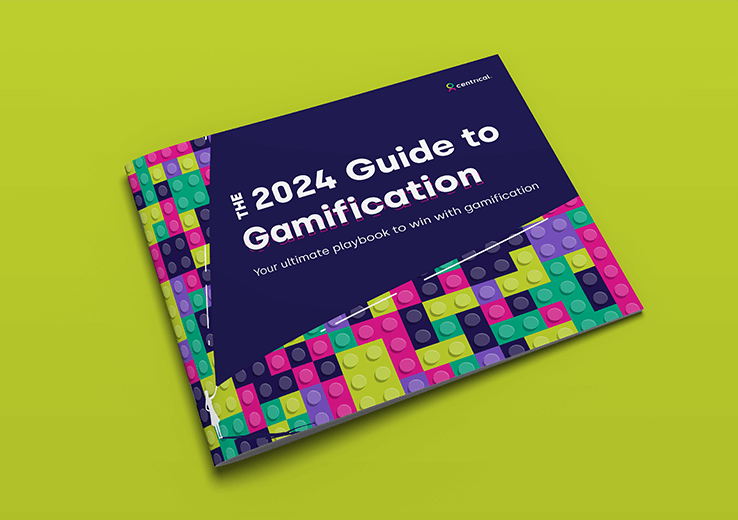Next best action, Netflix and Amazon: Gamification’s Secret Sauce?
“Next Best Action” sounds pretty mysterious, yet it is one of the core features we use in our gamification platform. Today, we use it to prompt immediate action, mostly with regards to micro-learning. Just like Facebook suggests “share a memory” or LinkedIn to follow someone – Next Best Action suggests an activity that the employee can immediately perform upon entering the system. It is one of the strongest features we have in terms of driving activities, mostly learning, and in the future, we plan on using it for much more. Since it’s pretty unique, I’ve decided to dedicate an entire post to it.
What can a “next best action” be in the context of gamification? The term implies is that several possible actions can be taken – and that one small activity is preferable to others. Assuming the employee entered the system to see how he/she is doing, Next Best Action implies an immediate “to do”.
The inspiration for the next-best-action feature was the e-commerce world. Netflix’s recommendation algorithm was one of its key differentiators (before it began to also release its own programming). With 75 million subscribers in 190 countries worldwide, it has a personalization algorithm which resets daily to help users discover content they’d like, out of the tens of thousands of titles Netflix has. Similarly, Amazon has always made use of its “recommended” algorithm, which used collaborative filtering algorithms to tell what preferences people have and suggest Amazon products accordingly. Both of those imply what should be done next.
What if you could recommend a “best” action to employees? It would not have the entirely voluntary aspect of Netflix or Amazon, but it would prompt a specific action/s. It would answer the question people often ask themselves at work – “what now?”.
“So what?” or “What Now?”
Modern Gamification is used to show employees how they are performing and direct them to change their behavior, by using game elements that engage and motivate them. When entering the gamification platform, employees can see how they are doing, like you would if your fitness tracker was applied in a work environment. The “next-best-action” is the activity that follows their reflection on their performance.
Let’s assume I am a salesperson and I’ve just logged into Gameffective to see how I am doing. Looking at my KPIs, I can see whether I am performing the right sales activities and whether I am making my targets. Each of the KPIs shows me a different focal point in terms of desired behaviors. In this manner, a balance between often conflicting KPIs is achieved.
This is where “What now?” comes into the picture, as in “I see I should be doing better, but I’m not sure how to do it”. This where “Next Best Action” comes into the picture, prompting employees to act – and to choose the right action. Instead of having employees soul search to discover the next best action, the system recommends it, making the decision and the activity a much easier choice for the employee.
The world of Next Best Action
Next best actions work to prompt users to perform one activity. While the “missions” screen in our enterprise gamification solution contains larger sets of activities – micro learning sequences that can be the bedrock for the acquisition of a new skill – next best action is just one or several actions that are highlighted – like a cartridge that exposes one activity at a time. The goal is to answer the “now what” question with an immediate call to action, that is optimized for both the employee and their business goals. Here are some of our favorite options:
1. New product introduction
Remember the salesperson? What if the company has a new product offering and the salesperson isn’t selling it enough, because he didn’t bother to look for the materials that explain it? What if selling the new product is a major strategic goal for the company?
In this case, the next best action feature would suggest micro-learning activities to drive better new product knowledge – such as quizzes, simulations and product explanations available on all types of media. This means that every time the employee thinks about “now what?” after reviewing their sales results – the answer is clear – learn more about the new product so you can eventually begin selling it.
2. Communications
In many cases we’ve seen the next best action used as a way to communicate with the workforce about the product and more.
3. Going through a set of learning activities
The next best action can drive one micro-learning activity at a time, driving employees to go through an entire set of activities – from new skills training, to compliance and more.
4. Taking action in the real world
Next best actions don’t have to be digital. They can be actions in the real world – like getting up from your desk and going to chat with a colleague, meeting your manager for a one-on-one meeting and more.
5. Accessing other systems and applications
Next best actions can also be used to drive new tool adoption – such as enterprise social networks, knowledge management tools and more. This can be part of a change management or process improvement effort within the company
6. More interaction with game elements
One of the more interesting uses of the next best action function is getting people to use the gamification platform in a deeper way. For instance, checking out the “match” function and comparing their performance to a peer, or doing what’s necessary to get a badge.
What would you use next best action for?
Engage and motivate your frontline teams
Improve performance with an AI-powered digital coach
Deliver world class CX with dynamic, actionable quality evaluations
Boost performance with personalized, actionable goals
Nurture employee success with the power of AI
Listen and respond to your frontline, continuously
Drive productivity with performance-driven learning that sticks
Drive agent efficiency, deliver client results
Keep tech teams motivated and proficient on products and services while exceeding targets
Maintain compliance while building customer happiness and loyalty
Enlighten energy teams to boost engagement
Engage, develop, and retain your agents while driving better CX
Improve the employee experience for your reservations and service desk agents



 Madeleine Freind
Madeleine Freind
 Natalie Roth
Natalie Roth Linat Mart
Linat Mart












 Doron Neumann
Doron Neumann Gal Rimon
Gal Rimon Daphne Saragosti
Daphne Saragosti Ella Davidson
Ella Davidson Ariel Herman
Ariel Herman Ronen Botzer
Ronen Botzer